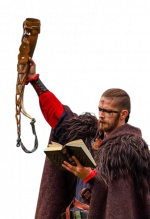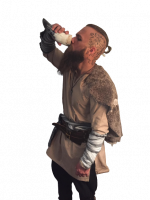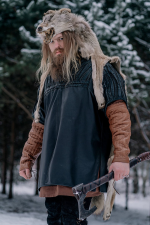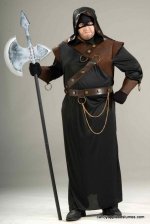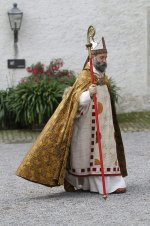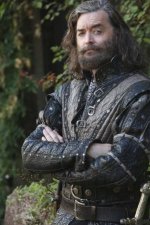Redfren
Coffee & Books
Staff member
Moderator
Inner Sanctum Nobility

The World of Vikings

Thumbnails are used in this thread. (This can slow down your phone.) Click the image to increase the size.
Welcome to The World of Vikings. This thread and its purpose are to act as a quick reference guide for the fictional world that it represents. Saving time and effort when looking up relevant information. If you see something you like, or if you want to use the world in general you are more than welcome to do so. It is here for everyone.
This is not a true representation of Vikings. While some of the information might be historically accurate it is not a replacement for actual facts and historical information. This is a fictional story, and this reference world thread will reflect that. If you see something inaccurate you are welcome to share your views in a PM but please do not post on this thread.
This story will be dark, and horrific at times. The World of Vikings reflects that. Do not send me hate PMs because you see something sensitive or that you disagree with. This is a fictional world and my views on it. It is not now, nor will it ever be my views of what people should or should not think about particular subjects.
Thank you.

Thumbnails are used in this thread. (This can slow down your phone.) Click the image to increase the size.
Welcome to The World of Vikings. This thread and its purpose are to act as a quick reference guide for the fictional world that it represents. Saving time and effort when looking up relevant information. If you see something you like, or if you want to use the world in general you are more than welcome to do so. It is here for everyone.
This is not a true representation of Vikings. While some of the information might be historically accurate it is not a replacement for actual facts and historical information. This is a fictional story, and this reference world thread will reflect that. If you see something inaccurate you are welcome to share your views in a PM but please do not post on this thread.
This story will be dark, and horrific at times. The World of Vikings reflects that. Do not send me hate PMs because you see something sensitive or that you disagree with. This is a fictional world and my views on it. It is not now, nor will it ever be my views of what people should or should not think about particular subjects.
Thank you.
The World
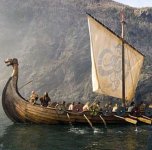
This story takes place in 795, two years after the first invasion of Britain. The first invasion was done in Lindisfarne a small holy monastery. However, after this raids increased and began to quickly blossom out of control. It would not be until 866 that the Vikings arrived in York and made a land of their own called Jorvik. With that in mind understand that they are in this world still very much in the earlier stages of their raids. Jorvik has not been created and will not be created for another 71 years. Most Britons do not know a lot about the Vikings in this era, nor are they prepared to deal with them.
It is important to note that these Vikings who are being referred to are from Norway, not Denmark or Sweden. These particular Vikings will be referred to often as Norse invaders and not the Danes which refers to Denmark. The largest driving factor for the Norway Vikings to invade was that Norway was very hilly and very cold. Their hope was to settle in better lands for their farms as their current land was not good for growing crops or rearing animals. It should also be noted that there was another problem and that was overcrowding. There simply wasn't enough good land for everyone to share equally which caused a large number of internal conflicts throughout the years. Treasure of course was another driving factor, they were already going to settle the land and had little understanding of their English God, Monasteries in particular confused most Vikings because of the amount of wealth stored there without protection.
Lands settled by Vikings were protected in later years by something called Danelaw. Which King Alfred, The Saxon King of Wessex helped make. That would not happen however until closer to 866. During this era, lands settled by Vikings, which were rare were often attacked and taken back or constantly bombarded until the Vikings returned across the sea.
In 794 The first raids against Scotland and Ireland took place as Vikings, began exploring the coastal lines to find more lands and understand the land they were dealing with. It would not be until 820 That true raids began again on the English Coast.
Foods

Vikings lived as most people did. The exception was that unlike larger cities trades were smaller and on a much smaller scale. Because of that most Vikings had some basic knowledge of farming and hunting. As trade was not a significant way to maintain a household. Those foods could include.
Vegetables, Leeks, Onions, Turnips, Parsnips, Carrots, Potatoes,
Wild nuts, Hazelnuts, Walnuts
Berries, Gooseberries, blackberries, blueberries (It's important to note that Strawberries, aside from looking different were mostly found in Britain at this time and not Norway. They were not actively cultivated as they are today because they were abundant in the wild and not viewed as a standard berry. They also looked different then the berries we have today.
Grains (various types.) Were often used to make bread and also porridges.
Herbs, Fennel, Common Sorrel, Wild Garlic, Parsley, and more.
Leaves, Nettles, and spinach leaves.
Animals, Deer, Wild Boar, Fox, Beaver, Bears, Fish,
Domesticated animals, Chickens, Goats, Sheep, Pigs, Cows, and Oxen. It should be noted that most Cows and Oxen were long hair and were slightly different than what we know today. They were also extremely valuable. Not only for their use in labor and plowing fields but for their meat, milk, and butter or cheese.
Eggs, from hens and other wild birds.
Honey from bees.
There are more types of foods, but these are the most common and familiar to a Viking in this era.
Clothing & Clothing Tools

Vikings had many aspects of clothing in the culture. Some clothing ranged in dyes in various colors, others were fine and well designed with intricate details on them. What is important to note here is not the style of clothing but that they did not use clothing to signify position or status as the English did. A low-standing peasant could wear an embroidered tunic for example, and he would not be punished for presenting himself as higher status.
Most of their clothing was made of wool, not silk, with overlapping flaps to help seal out the cold weather. Buttons were not a thing. Typical shoes were leather with a stronger bottom but lacking laces. Others went above the ankle like a boot but did have laces around the top. Viking shoes were unique because they were designed for harder ground and hilled areas. The English did not make their lower-class shoes in this way, so they stand out in this regard.
Women wore standard dresses but often had another heavier shoulder strap piece like an apron over that. Their dresses typically ran to the ankles and were quite heavy again to protect them from the cold. The most common jewelry that nearly all women would use with their clothing was a brooch, or what we would refer to as a turtle shell brooch because of its shape. These could be plain, but most had beautiful and well-engraved designs on them.
Another frequently used item was glass and amber beads which they would string between brooches. They could also be used to hold items like keys, scissors, needles, a knife, or even a whetstone that they suspended by beaded cords or chains from their brooches and belts.
Head coverings which were typically worn by women was also seen as a type of jewelry or dress accessory. They were often knotted kerchiefs flipped over. On special occasions they might add jewelry to their headdress, however, unlike clothing headdresses were used to distinguish status. A commoner found wearing a headdress of jewels like a crown or circlet would be confronted.
Vertical Looms were used to make these types of items and more. Women who were the typical user of these items would spend days or longer in front of one. Shears unlike our own today were typically made of iron and a single piece that was squeezed together. Needles were often made of bone, wood, or antler but sometimes metal but these were larger, not smaller ones like we have today.
Cleanliness

When you think of a Viking it's easy to picture a stereotypical Viking being a grizzled warrior fresh off the battlefield, covered in dirt and muck and not caring about it at all. However, this is simply not how it was. Vikings, (Even to my surprise.) Were quite clean in comparison to the rest of the world.
They had a lot of things that were just not used by others, such as a comb, tweezers, even cleaning their teeth and ironing their clothing. Vikings cared about hygiene. Let's give an example of why this revelation is so shocking. A typical peasant of Britain might go a week or longer without bathing, and or brushing their hair. Their teeth were not even considered, and personal grooming was also not something typically done. Clothing was washed for a bit when they could afford it and done so often by lower establishments in the already used water. To a Viking, this culture shock would be extreme. Vikings were known for combing their hair every day, they might even bathe every day or at least every Saturday. They changed their clothing frequently and that clothing would often be ironed and washed in freshwater. They also tended to their teeth assuring they were clean and trying to avoid rot. Vikings could and would become offended by foulness. A man smelling of piss and shit and looking as if he just climbed out of a pig pen would not be allowed to enter the feast hall. So, this hygienic nature of theirs was also enforced.
Weaponry and its Social Status

When we think of Vikings, we often think of a dual-wielding warrior with hand axes in either hand. What is not considered is what they had was not only a symbol of their social standing but also their wealth. Well, most everyone would carry a small knife or other tools. As these were quite affordable, only the wealthy could afford an elaborate sword or lance, etc. This also included their armor which for a Viking heavy armor was Chain Mail while lighter armor would be Furs, and Leathers if any was worn at all.
Vikings could and often would carry multiple weapons, A Bow and Ax, A sword and shield, and Bow. Unlike the English, Vikings did not separate their universal warriors by weapon type. Guardsmen vs Bow Men for example. While most Vikings could afford weapons styling that weapon and giving it significance was important to them and would help them stand out. A weapon of no use but still holding prominent value like an aged sword of their late father might be taken into battle on the back of a warrior but never drawn. Or soaked in the blood of a fallen enemy but never used. Because weapons held significant importance to Vikings.
It was also not common for a warrior to be judged on their weapon of choice. A large ax-wielding Viking Raider would not belittle a dual-wielding dagger Raider that stood at his side. Especially if those Daggers were engraved or inlaid with gold and silver.
Mythology

We wouldn't be able to talk about a Viking without talking a little about their Mythos. Vikings worshipped and engrained divinity in nearly everything they did. From their daily life to their combat. However, this is a college-level course of information easily surpassing a rough summery. If you seek further information on any of this or (Correct and accurate information), find a more reliable source. This is for quick reference and is not intended to be a guide or accurate representation of their culture.
Viking Gods looked like regular people and they had their faults like normal people as well. It should also be noted that Gods were NOT IMMORTAL. But they did live for a very long time and held unique powers. There are two categories of Viking Gods, The Vanir, and the Aesir. These two types were at war for a long time but eventually made peace and this is one of the reasons their culture can seem so confusing with the number of Gods they actually had.
Aesir Gods – Were typically worshiped in connection to victory and war.
Vanir Gods – Were typically connected to a harvest or prosperity.
The Gods themselves lived in a kingdom located in the sky called Asgard. The palaces were believed to be made of gold and silver. The largest of these places was Odin's home which was Valhalla. It was widely believed that any warrior who died bravely in battle would be transported to Valhalla by Valkyries, where they would feast every night. Midgard or (Middle Earth) was another realm occupied by humans as well as elves, dwarves, and goblins.
It was also believed that the monsters in Midgard were invisible to humans, but they could be seen by the Gods. Midgard was connected to Asgard by the rainbow bridge which was referred to as Bifost and guarded by the Viking God Heimdall.
You should also know that Vikings believed the world was flat and surrounded by a large sea. At one time the world itself was anchored in place by the great tree called Yggdrasil or (World tree). The branches of this tree reached into the heavens and its roots made their way all the way down to the land of the dead.
GODS!

Understanding the Gods is vital as so much of their culture is centered around them. I will not be going into great detail on these Gods but will provide their names and a brief description of their purpose if you would like more information, it is recommended you research it.
Odin aka Woden, All-Father, One-Eyed God. (Major God)
God of knowledge, wisdom, war, and poetry. Ruler of all other Gods.
Odin has two ravens named Hugin (Thought) and Munin (Mind), they sat on his shoulder They were used to spy on humans and monsters and even the Gods themselves. At night they would return to Odin and tell him what they learned.
Belief – Odin was thought to disguise himself and walk among the humans, interfering in their affairs and causing conflict and fights. His palace had 640 doors and during Ragnarok (End of the World) they would burst open and fight giants. Because of this Odin actively sought out more warriors to join him and this is why he interfered in most human affairs so they perished in battle and join him in his great hall for the real fight which was Ragnarok.
Thor (Major God)
Son of Odin, God of Thunder, Storms, protection, and Strength
Thor protects Asgard with a magical hammer that caused thunder and lightning.
Thor does not only protect Asgard he protects other realms as well from what they called The Cold, The Hunger, and The Giants.
Thor is strongest with his hammer (Mjolnir.) but he also Enhances his strength further with a belt and iron gloves.
He has One daughter (Thrudur), and two sons (Mangi and Modi).
Thor is in constant battle and will actively seek it out when he is not.
Freya and Frey (Major Gods)
Gods of Love, War, and Fertility.
Freya and Frey are sister and brother and members of the Vanir family of Gods.
Freya cries golden tears when she is sad, especially when Viking warriors die in battle.
To stop her tears Odin allowed Freya to help half of the fallen warriors recover from their injuries but the other half was to be delivered to his hall at Valhalla.
Freya rides a chariot pulled by two wild cats.
Frey is the leader of all Elves and Dwarves.
He has a ship that folds into his pocket and a magical sword that fights on its own.
He rides a chariot that is pulled by a golden pig.
Baldur aka Balder (Minor God) –DEAD--
God of Good and Beauty.
Was known as a gentle God but tormented by dreams and terrible things that should not happen.
Owned a ship called Hringhorn the greatest ship in all existence.
His death is a cautionary tale about betrayal and trickery. Having received a spell to protect him from dreams of his own death. Loki found out and used the chance to get another God to kill him, now that he could not see his own demise.
The Fates aka Three Norns (Minor Gods)
Gods of What has been and What is and What will be.
These three goddesses were believed to hold the threads of all living creatures and would cut that thread with scissors when it was time for them to die. (None could change this. Odin tried many times.)
The Fates were called on often for visions and other sorcery by dedicated followers.
Frigg (Minor God)
God of Marriage, Love, and Earth.
Known for her temper even driving Odin from his home.
Receives the wisdom of Odin when he confides in her and no other.
Was given increased Wisdom by Odin
Is the Queen of all Goddesses.
Heimdall (Minor God)
God of Hearing and Sight
"Great Heimdall let me see the unseen. / Great Heimdall let me hear the unheard."
Guardian of Bifrost (Rainbow bridge to Middle Earth/Asgard)
His hearing is so good he can hear the grass growing
His sight is so good he can see over 100 miles.
Son of Odin
Had 9 mothers all of which were sisters.
Idunn (Minor God)
God of Beauty and Youth
She holds a vital position for the Gods and because of this is often left alone. She provides Golden Apples that keep the Gods Healthy and Young. Without these apples, it is believed the Gods would age very fast and parish.
Loki (Minor God) –Not Technically a God--
God of Tricksters, Lies, Deceit
Adopted son of Odin
Born of a Fire Giant –not a God—
Has the ability to shapeshift and does so often.
Loves to prank humans or other Gods, and not always in a fun way. (Will at times trick humans to their death.)
Njord (Minor God)
God of Fertility (Godhood, given away to his son Frey.) and Wealth
Njord is a member of the Vanir Race
Njord is extremely wealthy having the power to give money or land to anyone he wants.
No longer married to The Giant Skad the daughter of Thiasi.
Unhappy the two lived in different lands until eventually, they separated and Njord moved back to the sea. Skad returned to the giants.
Sif (Minor God)
God of Harvest
Wife of Thor
Very proud and beautiful known for her long hair.
Tricked by Loki he cut her hair off. She cried so much that her tears reached Middle Earth and stopped all crops from growing until Loki spun her new hair.
Tyr (Minor God) –Once a Major God—
God of Battles, Justice, and Law
"Often worshipped by warriors."
Known to be bravest of all Gods.
Could decide the outcome of battles.
Was so brave he took many risks that were not in his favor.
Upheld Justice and Law.
Greatly known for his role with Fenrir the Wolf.
There are more Gods than this, and this section can be updated but this is the list for now. There are, however, as I stated many, many more.
VIKING MARRIAGES AND PROPOSALS!

Beneath the perception of a Viking's endless ruthlessness was a highly structured and orderly society and one of the best examples of this was their marriage practices. This will be a description of some information on this topic if you desire more, I strongly suggest you look this information up as it is a very fascinating subject.
Vikings married young, a marriage was typically a formal contract that was bound with financial, and moral obligations along with ritualistic behaviors. Once the marriage was over couples would share in domestic duties and wives were allowed to divorce their husbands. Even though this was a male-centric society.
The Contract
Men were expected to marry before the age of 20. The life expectancy of men in these times was roughly 50 years of age and it was expected that men and women would couple so their people could survive. Because of this, the Norse people would marry and their wives were often barely in their teens at the time of these marriages. (THIS IS NOT ALLOWED ON THE FORUMS! THIS HAS BEEN ALTERED!)
The reasons for marriages often were political or economic in nature, rarely was it Love but that too was acceptable when it happened. Marriage was very much handled like a business transaction when it was formed. (Which could be done behind the backs of others and kept secret.)
The Groom would pay the Bride's Fee to the Brides family. (This was typically done in gold or other wealth.)
The Bride would pay a dowry to the groom's family. (This could often be services or wealth but included weapons clothing and other such things.)
This assured both families were financially invested in the union. Vikings would often use marriage for a strategic alliance or to form a bond. It was uncommon for females to be forced into a marriage, (History believes they were not.) But stories suggest they were at times. Making this unclear, (In this story they could be.) Marriage Ceremonies were used to formalize the union publicly but the act itself was already or should have already been completed. In the event of an interruption, the marriage would already be solidified.
The Marriage Ceremony
Norse weddings were different, but ceremonies often held symbolic gestures to mark their change into married life. While it wasn't intended to be done with happiness it was instead done to show loyalty, peace, acceptance, and productivity for offspring. Rituals were quite common at these ceremonies and below is an example of a marriage ceremony but not the only style or type.
- Weddings were usually held on the day of Frigg (Friday) the Goddess of Marriage and Fertility.
- Normally Sweet Ale Brewed from honey was shared by the bride and groom at the ceremony with a toast to Odin and Freyja to bless their union with fertility.
- The exchange of rings was common as well as arm rings as the vows were spoken.
- Women typically wore wreaths made of flowers on their heads while men were armed with a family sword or weapon.
- After the ceremony, the two families would participate in (Brud Hlaup) which was a foot race to the reception hall with the losing family being tasked with serving the wedding ale to the victor's family.
- The bride's family would present a sword to the groom who would use that to strike a pillar in their home. The depth of this cut indicated the strength and longevity of the newlywed's marriage. (Very superstitious people if the sword bounced off and left a small ding, this would be a very big deal. Marking their marriage with short-term and tragedy.)
- The final ritual was that the guest would escort the woman and man to their bedroom, so they could watch them climb into bed together. (They didn't stay for the whole show but assured that this was going to take place.)
DIVORCE
It was not uncommon for a Viking woman to find herself suddenly widowed, either from her husband being lost in battle or at sea or worse. They were expected to take a brief time to morn and then marry again. (Remember the Norse wanted to make sure they survived and women going without a husband was extremely uncommon if they were still young and fertile.)
Unlike women in Europe and most of the rest of the world. Viking wives could escape miserable unions. They could and would divorce their husbands based on finances, sexual neglect, and yes even domestic violence. Norse recognized that not all marriages were going to work. They not only allowed women to get divorced but empowered them to do so. Meaning they could initiate the divorce without his permission or presence. (Typically, sexual neglect meant three years without.)
If the husband lived in poverty, it was grounds for divorce, if he struck his wife. (Three times, as 3 was an important number, you'll see it often in their culture.) They could demand a divorce. Women getting re-married after a divorce wasn't just widely accepted but expected if still fertile.
One aspect that did not qualify for divorce which reflected the male-dominated society, was infidelity. Husbands could have multiple mistresses, lovers, concubines, or slaves. Even going so far as to have them live in the same house and women were not allowed to do this. She was expected to be faithful with severe consequences for adultery. Which was not limited to death.
SHIELDMAIDENS

This is a hotly debated issue. We are not here for that, so please do not debate with me. For this story, (Which is fictional.) Shield Maidens are something that exists, and this is how they work.
- Shieldmaidens have typically done something to stand out and separate themselves from other women.
It would be uncommon for a person to select a woman to be trained as a shieldmaiden, instead they performed an act that directed them in this way. Because of this, women seeking to be shieldmaidens were often discouraged, mocked, or laughed at. Because the desire to be one was not enough.
Hervor – a famous shield-maiden berserker for example. Wanted to be a shieldmaiden and suffered this fate. In retaliation, she solidly defeated every boy and several men in her village before setting out on her own adventures. When she returned, she was seen as a shieldmaiden and trained properly. - Shieldmaidens are still women and still bound to the laws of a woman.
Being unfaithful to their spouse for example would result in the same punishments as it would for a housewife.
However, this did not apply to Raids. Where they were as free as the men, nor did it apply to their spoils such as slaves.
It did apply to infidelity in general though. Once again showing a male-driven world. - Once a shieldmaiden was trained, she was treated very much like a male in many aspects. Weapons, armor, awards, honors, raids, and so on. Some women went out of their way to behave like men, but this was not necessary, it was neither frowned on nor encouraged. They behaved how they wanted and that was universally accepted.
- Shieldmaidens could be quite strong and behaved in this way often, they were also invited to events or rites that regular women would not be. A feast at the hall for warriors for example would typically only include men or raiders but a shield maiden would easily be included in those numbers.
- Men were not as quick to defend shieldmaidens as they might be for a typical woman. If a male from a feast attempted to touch her or kiss her and she was married for example the husband may sit back and laugh while she proceeded to attack and or duel him to the death for the insult against her husband and herself.
- Because of the importance of marriage Shieldmaidens were not excluded from this nor were they excluded from creating offspring. As stated prior they were still required to live by the standards of a normal woman. While it might seem as if they had more freedom in truth, they simply had more responsibilities, now expected to not only hunt but also do the wash for example. Where typically only the men would hunt.
- Valkyries and shieldmaidens are integral when dealing with the Norse.
Valkyries held a similar role for the Gods, in fact, Valkyries were often referred to as Odin's entourage of shieldmaidens. Valkyries are very closely associated with warfare and the warrior mentality while also being beautiful women.
In some situations, Valkyries were portrayed as sinister, sitting in front of a loom for clothing and using the intestines of their victims as thread and severed heads for weights. This is not typical however and is intended to describe their ruthlessness and lift them up to the Viking standard.

This is not a translated list of Norse/Viking words. This is a type of movie magic list, providing common words which can be used during the story and a list for quick reference if they are. This list is subject to change and can be added to as needed.
- Faðir - Father
- Jarl – Earl, Independent Lord
- Móðir - Mother
- Bróðir - Brother
- Systir - Sister
- Blot – Sacrifice, Ritual (to be described)
- Helheim – Hell, The underworld, Land of the dead.
- Skalds - Bards or Poets
- Skal - Cheers
- Drang or drenger – Young warrior
- Thegn – Mature Warrior
- Skeepare – Captain
- Himthiki – Housekarls (Lowest rank of elite soldiers.)
- Folc – Population of settlement
- Berserkr – Berserker
- Klubba – Club
- Rannsaka – Ransack
- Slatra – Slaughter
- Reisa – Raise
- Renna – Run
- Skirra – Scare
- Uggligr – Ugly
- Gestr – Guest
- Angr – Anger
- Thrall – Slave
- Homgang - Duel (to the death)
- Godi / gydja - Priest / Shaman
- Hofgthi - High Priest
- Gothi - Another term for priest by particular tribes
- Seidr / Sidr- Sorceress / Witch
- Flyting - Duel with words (typically poems or rhymes)
- Skeppare - Ship Captain
- Ting - Great law meeting with Jarls and local warriors.
Last edited:













